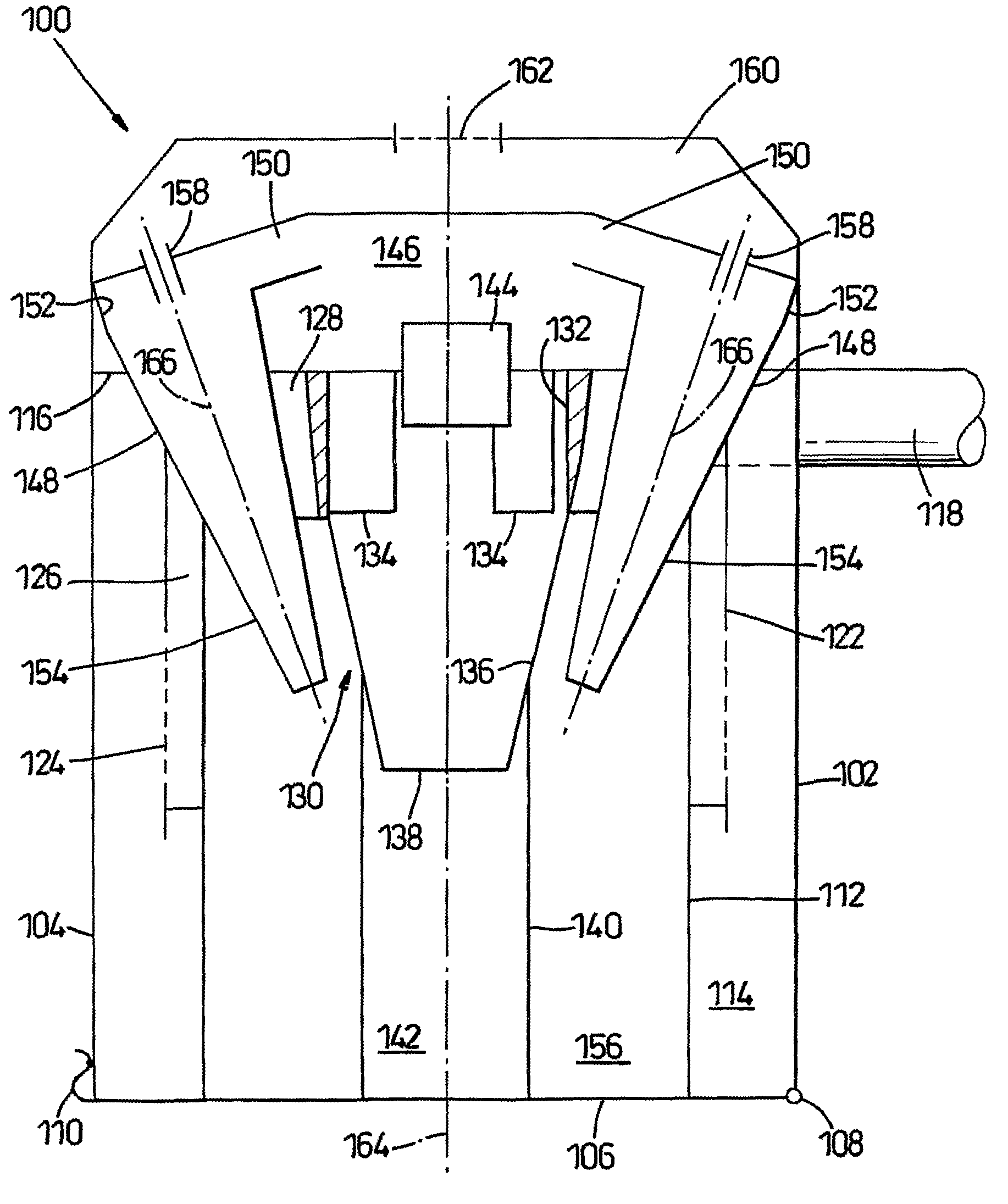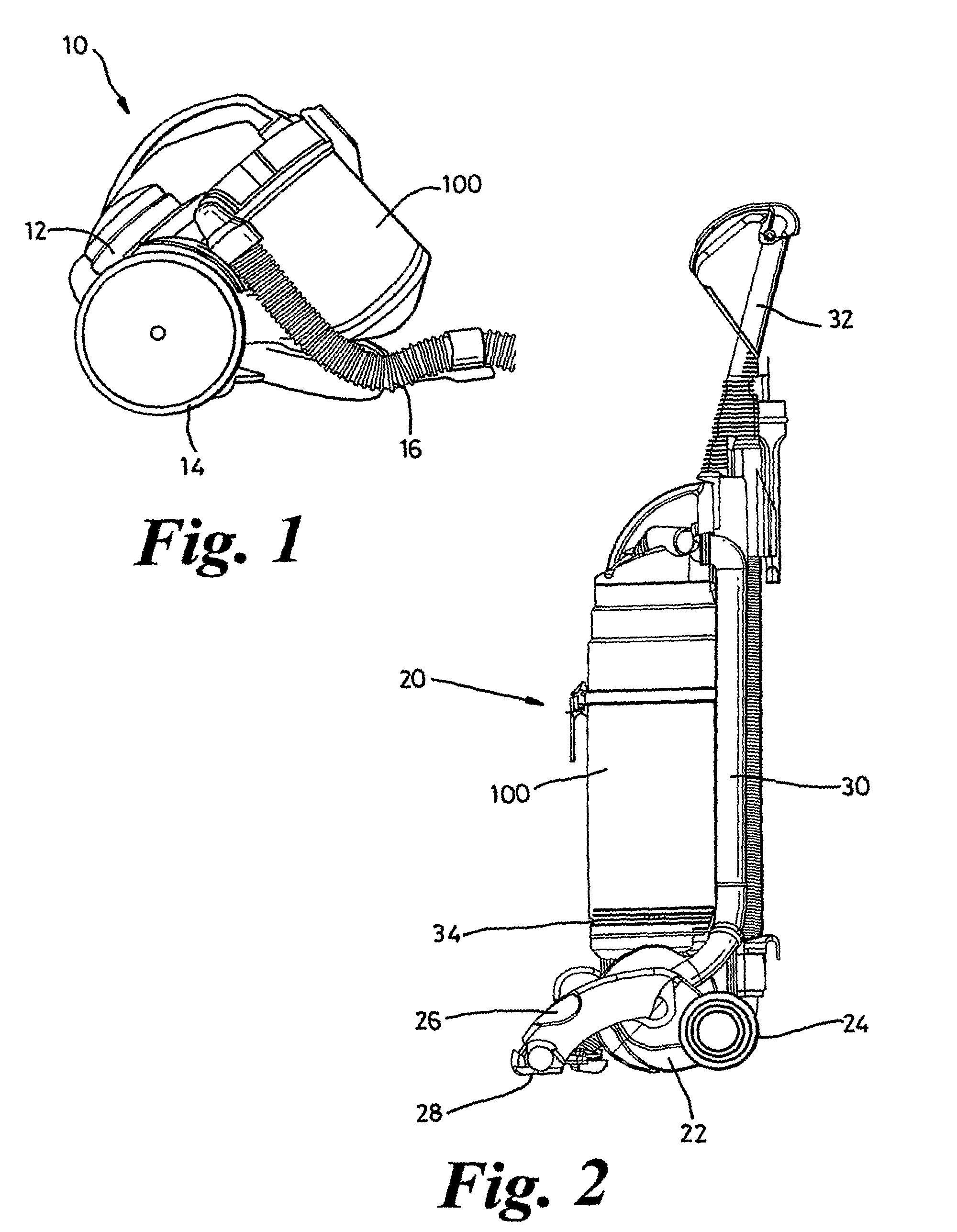Dirt and dust cyclonic separating apparatus
a cyclonic separation and dust technology, applied in the direction of vortex flow apparatus, filtration separation, separation process, etc., can solve the problem that no prior art arrangement achieves 100% separation efficiency, and achieves high separation efficiency, low efficiency, and high efficiency
- Summary
- Abstract
- Description
- Claims
- Application Information
AI Technical Summary
Benefits of technology
Problems solved by technology
Method used
Image
Examples
Embodiment Construction
[0020]FIG. 1 shows a cylinder vacuum cleaner 10 having a main body 12, wheels 14 mounted on the main body 12 for manoeuvring the vacuum cleaner 10 across a surface to be cleaned, and cyclonic separating apparatus 100 also mounted on the main body 12. A hose 16 communicates with the cyclonic separating apparatus 100 and a motor and fan unit (not shown) housed within the main body 12 for drawing a dirty airflow into the cyclonic separating apparatus 100 via the hose 16. Commonly, a floor-engaging cleaner head (not shown) is coupled to the distal end of the hose 16 via a wand to facilitate manipulation of the dirty air inlet over the surface to be cleaned.
[0021]In use, air drawn into the cyclonic separating apparatus 100 via the hose 16 has entrained dirt and dust separated therefrom in the cyclonic separating apparatus 100. The dirt and dust is collected within the cyclonic separating apparatus 100 while the cleaned air is channeled past the motor for cooling purposes before being eje...
PUM
| Property | Measurement | Unit |
|---|---|---|
| shape | aaaaa | aaaaa |
| angle of taper | aaaaa | aaaaa |
| angle | aaaaa | aaaaa |
Abstract
Description
Claims
Application Information
 Login to View More
Login to View More - R&D
- Intellectual Property
- Life Sciences
- Materials
- Tech Scout
- Unparalleled Data Quality
- Higher Quality Content
- 60% Fewer Hallucinations
Browse by: Latest US Patents, China's latest patents, Technical Efficacy Thesaurus, Application Domain, Technology Topic, Popular Technical Reports.
© 2025 PatSnap. All rights reserved.Legal|Privacy policy|Modern Slavery Act Transparency Statement|Sitemap|About US| Contact US: help@patsnap.com



